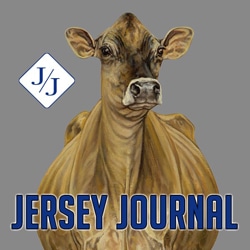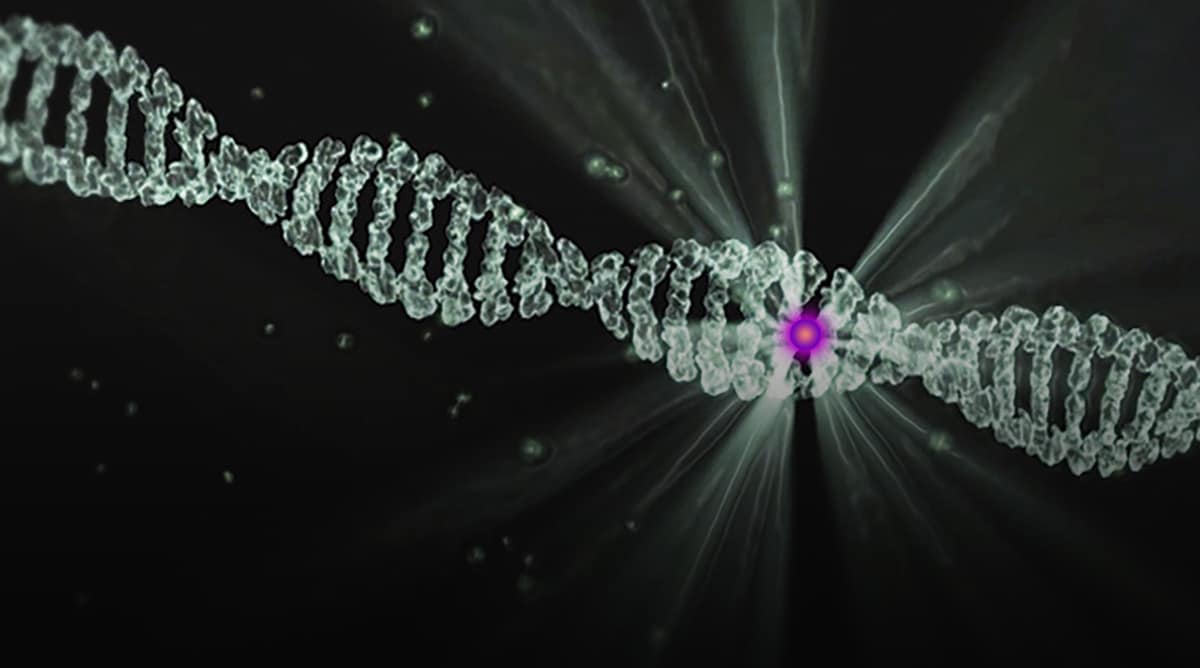Capturing the Value with Photography
It is no secret the past few years have brought significant challenges for dairy cattle producers. With these challenges come budget re-evaluations and pennies to begin pinching. It is easy to cut
certain amenities that seem to bring more expenses than revenue. For some, this may include picturing and advertising their cattle.
As a resource for advertising, the Jersey Journal has felt the impact in reduced ads and a lower amount of professionally staged pictures being submitted by Jersey enthusiasts. In an age of cellphone photos, easy-to-use digital cameras, affordable editing software and free social media advertising, promotion has gone to whole new realm in recent years.
This roundtable highlights four professional dairy cattle photographers and one dairy producer as they communicate the value behind picturing cattle and how they got started. This is a diverse group: two women who paved the way for female dairy cattle photographers, a man who provides the uniqueness of full-service photography, and one woman who has worked to bring cattle
pictures to the next level. All travel throughout North America to provide dairy cattle breeders with unique and valuable service.
Though every dairy has different goals and aspirations, all dairy cattle breeders can come to the agreement that having a picture of the ‘special’ animal in their life can bring abundant happiness. Even in an industry that is currently challenged, with that picture come countless memories, valuable marketing tools and the inspiration to keep breeding high-quality individuals.
We were also able to get the opinion of dairy farm, Steve Rowley, Foxworth, Miss. Follow this link to read his thoughts on the value of professionally photographing dairy cattle.
Roundtable Participants
Kathy DeBruin Hayes, New Glarus, Wis.: Owner of Agri Graphics Ltd (AGL), this dairy cattle photographer helped pave the way for women in her trade. She began working with the former owner of AGL, Danny Weaver, in December of 1972. She purchased the company from Weaver in 1990 and relocated it to New Glarus where her husband at the time and she operated a registered Holstein herd, which has since dispersed.
DeBruin grew up in Grayslake, Ill., where her family rented the RR Donnelly Farm. Neither of her parents were from a farm background. Both were city born and bred. Her father worked on the truck farms with horse teams on the south side of Chicago, which is where she believes his passion for agriculture and horses began. Her dad rode bareback broncs, Brahma bulls and was a pick-up man in various rodeos until she and her six younger siblings were school age.
When DeBruin’s father’s rodeo days ended, he initially milked an experimental herd of Holsteins and Guernseys for the University of Illinois during a period of research to better the breeds. Eventually he started his own herd of grade Holsteins with a handful of registered Holsteins. As his children reached 4-H age, he purchased each a registered Brown Swiss from a former neighbor and Swiss breeder, Wm. Meyer of Walnut Creek Farms in Peotone, Ill. Thus began a lifetime love affair with the Brown Swiss breed for the DeBruin family. It did not take long for their family of seven kids to have the Brown Swiss herd take over and become Just So Farms. Their family was fortunate to breed and show several All Americans.
She has three adult children, Shannon, Megan and Connor, who all are working in the ag advertising/marketing field.
Frank Robinson, Lodi, Calif.: A true jack-of-all trades, this photographer grew up in Georgetown, Ont., as the fifth generation for his family’s 30-cow Jersey herd. His family’s herd name, Starcrest Jerseys, came to be as the family name was Stark and the farm located on the crest of a hill. After graduating high school, Robinson went back to the family farm.
He came up with the ‘Bovine Beautician’ business name after spending numerous years trimming feet and clipping cattle prior to beginning to picture. He has been picturing for over 30 years. Robinson’s daughter and son-in-law are continuing the Starcrest name in Ontario with cows the trio own together.
Patty Jones, Southern Ontario, Canada: Jones grew up on a dairy farm in southern Quebec where she went through 4-H and developed a love for animals, in particular dairy. She is very grateful for the great work ethic her parents instilled in her at a young age. Jones still owns Holsteins and Jerseys with great partners under the Silvercap prefix.
She has been in the cattle photography business for 46 years and started her own business, Canadian Livestock Photography, Inc. Throughout that time, she has photographed over 80,000 animals and was humbled to be inducted in the Canadian Agriculture Hall of Fame in 2017.
Cybil Fisher, Green Bay, Wis.: The founder and owner of Cybil Fisher Photographic Services, LLC, is a native of Green Bay, Wis. While she did not grow up on a dairy farm, Fisher has been involved in the industry since she was 14 years-old. Her grandmother had a small grade Holstein farm which is where she developed an early love for dairy cattle. The interest eventually led her to 4-H, FFA and helped foster her eventual involvement with ‘show cows.’ Fisher has been picturing dairy cattle professionally since 1996.
Questions
What inspired you to become a dairy cattle photographer?
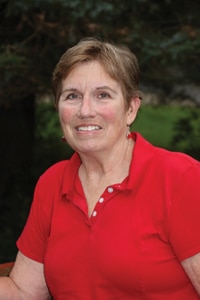
DeBruin: I began as a zoology major at Loyola University in Chicago, intent on finding some non-ag profession. I transferred to UW-Madison as a sophomore majoring in art and zoology, when my family eventually purchased a farm in Monroe, Wis. I was a member of the UW Dairy Judging team (the only kid not in the ag school, although Dave Dickson insisted I take his dairy cattle judging class) and was also a charter member of the Badger Dairy Club. By this time, I had revisited my intent on a non-ag profession.
Although trained to be a medical illustrator, my heart wasn’t in it and I decided I really wanted something in the ag field but didn’t want to start over. In those days, there wasn’t much available for women. We had a few professional photos made over the years and I was aware of the profession. It was the perfect combination of my art and agriculture interests.
Upon graduation in December of 1972, I went to Cary, Ill., armed with my photo portfolio from college and I had a long conversation with Danny Weaver. I persuaded him to take me on and teach me how to picture cows. I later learned he only expected me to last a couple months. This of course was a “man’s job.” Ironically it is now a field dominated by women.
Robinson: Throughout the years I had helped numerous photographers take pictures whether it was preparing the cattle for the pictures or traveling to help set them up on picture day. Years later, Stan Grosz asked me if I was interested in taking pictures. After a few months of thinking about it, I said that I would give it a try. He taught me the bare minimum about cameras and then I went off on my own learning by mistakes as I went. What made me survive, I believe, at those young learning years, was my knowledge of cows and the passion I had working with them.
I do remember helping Bruce Pickering come back to our home country and picture when I wasn’t even old enough to drive. He would tell stories of where he had been and the cows he had pictured. That may have been what started a little spark that would later ignite my interest in picturing when I got the chance years later. One place I remember him talking about was Cedarcrest and the great cows that were there. Years later, I was lucky enough to picture there a few times before the legendary herd sold out.
Jones: I have loved photography since I was very young. The idea of freezing a moment in time has always fascinated me. I went to college for photography and learned how to do product photography, portraits and whatever else.
I missed the rural life and wanted to get back to cows, Bob Miller of Mil-R-Mor Holsteins was visiting our farm and wanted to know what my future plans were. At the time, he was buying out Jim Rose Livestock Photo and wanted to know if I might be interested in coming into the industry.
Fisher: I certainly never intended to be a cattle photographer. My plan was to be a large animal vet, but once I entered college and received an “AB” in several classes, that plan failed because I did not have the 4.0 GPA needed at the time. I was literally switching majors every semester, in an attempt to figure out what it was that I really wanted to do with my life. At the prompting of my college advisor, I took a semester off in order to consider my future.
It was at this time that I took a job working full-time for Agri-Graphics who I had been helping on photo-crew prior to this. At that time, we were still working with film. Although my main job was to print black and white photos, I learned most of the aspects involved in the industry. This included developing film, creating proof rolls for the photographers, to slide production and large print framing. Eventually, this experience transitioned into my becoming a photographer with the company. I worked with them up until 2000 at which point I left to form my own company.
Who were your mentors while getting into the business? What is some advice they may have given that still resonates with you today?
DeBruin: My mentor, of course, was Danny Weaver. He was the ultimate perfectionist and instilled that in all whom he taught. Our goal was always to make them look the very best we possibly could. Another point that was also driven home was even though the animal you are picturing may not necessarily be a show winner or even attractive to you at all; it may be the very best they have and it may mark a particular milestone for that breeder and they deserve your very best effort.
They have chosen to spend their hard-earned money with you and you should give them that consideration no matter your personal feelings. Taking the time to initially explain why you are doing things a particular way usually yields better understanding and cooperation from a ‘green’ crew.

Robinson: I did not necessarily have a mentor. What drew me to the profession was working around people in the industry and hearing them talk about the cows they had seen and the people they met. If it was not for the friendships that I have made and my love of cows, I wouldn’t be in the business. When I go through the process of breaking cows again and have a chance to learn their personalities, it brings me back to the days of milking every morning in the tie stall barn with my cows who all had their own personalities.
Jones: I trained with Bob Miller. He loved and understood dairy cows, I knew about conformation but he taught me so much more and how to respect the grand ladies of the breed – the cornerstones. He was my best mentor, if I made a mistake he would ask if I knew what happened and if I learned from it. Mistakes are the best teachers. He would not dwell on it.
He also instilled in me that I could not do the job by myself so get along with him. When I was younger the intensity of the job of getting the “right shot” was overwhelming…it still is but with years comes experience and patience.
Fisher: When I was training with Agri-Graphics, I spent time with each of their photographers – Kathy and Eileen DeBruin, Maggie Murphy, Judy Black, Julie DeLavergne and Craig Johnson. I learned a little something different from each and am grateful for those opportunities.
However, Julie was the one who got me thinking about what it meant to be a ‘real’ photographer. Not just someone with cattle knowledge who happened to know how to operate a camera. We were at the Ohio Holstein Convention and I was taking photos at the banquet. She came, looked over at my camera settings and asked me if I switched my ISO to 400, what should my fStop and camera speed be. I literally had no idea what she was asking. She told me, “It is one thing to take photos and another to be a photographer.” It really made me consider things.
Another individual that I have to mention is Patty Jones. I had known her for several years prior to my leaving Agri-Graphics. She gave me invaluable assistance in the form of being a business owner and ‘forward thinking’ that I needed at the time.
Why do you feel it is important for dairy cattle breeders to have their animals professionally photographed?
DeBruin: It is simply human nature to respond better to a picture than the written word. Particularly with social media in rampant use today as a marketing tool, you need a photo to draw people in. Current photos are an invaluable tool. The use of genomics has led to such a rapidly changing atmosphere, breeders do want to know what they actually look like now, not just three generations back.
We have all seen just lately the value or damage images (not necessarily cow photos) incorrectly used can play in the industry. When scheduling a dispersal, having that advertising tool already in your hands is immeasurable.
Robinson: The value of professional picturing of these special animals – whether they are bull mothers, donor dams, show cows or a favorite – represents your breeding program for everyone to see. Only a few people may see her in person and her genetics could be around for years to come, in your herd or in others. With that picture eyes worldwide can see that animal.
Numerous times I have been told, “I am glad we pictured that cow,” as something unforeseeable happened health or injury-wise and they never looked the same. Even more often, I hear, “I wish we had pictured her,” as she was lost, or they have a lot of offspring and with a picture they would be more merchandisable. I also believe a lot of breeders do want to see pictures of daughters of bulls they are using or maybe going to use.
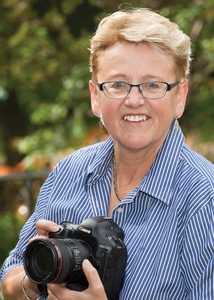
Jones: I know and believe that capturing a moment in time with a cow, calf or bull is one of the great things about cattle portraiture. It still is one of the best tools for advertising cattle, semen or embryos for sales. A lot of people take cellphone shots and they are another aspect. However, a pro will take the time to assess the whole animal and proceed to place her feet, top line, tail and head carriage for the best shot that day.
Angle shots are great also but should be used in conjunction with a side shot. The funny thing about angle shots is when they first came to be when a sire of daughters was putting on tremendous udders, but front-end strength was not as tremendous. The angle shot helped disguise this lacking trait and can cover a multitude of sins.
When I view young sire daughters, I like to see the same pose in order to assess the commonality between daughters. If it is a random shot here and there, it is harder to asses a pattern. I know you are probably saying the genomics will look after it, I prefer to use my own eyes as a watchdog to see what genomics or a proof is indicating. The day you or I go blind is another story.
Fisher: I travel quite a bit. Inevitably, while doing so, I meet people from outside the dairy industry who ask about my career. When I tell them that I am a dairy cattle photographer, they are usually baffled and have any number of questions. The most often asked one being, “Why would anyone want to photograph a cow?” My response is always the same, “For advertising,” in some form or another. Perhaps we are selling a particular animal in a sale, a daughter or family member. Either way it gives others who haven’t necessarily seen the animal in question an idea of how the individual looks.
We (me and the photographers who work for me—Jenny Thomas and Lea McCullough-Jordan) have always tried to be very sensitive to that fact. If you go back and look at the various cattle sales this year, animals with photos continue to sell better than others without them.
A good example is Cheryl Carlson from Wetumpka Jerseys in New York. She recently sold a daughter out of a cow she photographed this spring for $103,000 in June of this year. In addition, most foreign embryo buyers still want to see a professional photo before they purchase. I guess it just boils down to the farm in question and what the ‘goals’ of the operation are.
Do you focus on picturing cattle at shows or on a farm/commercial setting?
DeBruin: Although animals tend to be better prepared at a show and we all hire crews of our most professional helpers, I think my preference is picturing cattle on farm. There is not the time pressure that there is at shows. There has also been a trend in getting milking animals so overdone for the show ring, that by the time they get to us they are too miserable to stand correctly.
Robinson: I probably picture more cows that are registered but on commercial dairy environments. Picturing young bulls has increased a lot with genomics and less young sire daughters. I do a few state shows. I don’t really focus on any particular environment, but I am usually ready when the phone rings.
Jones: I tend to photo about 60/40 on farm to shows. Whenever a cow looks ‘her best’ regardless of a placing or classification makes for the great photo. Now with digital photography, it has become easier for the farmer as time is money.
The best use of time is guaranteeing we can photo on a specific day regardless of weather. I can use a flattering background that probably exists on the farm, but it is not feasible to move cows to it without it costing time. This also eliminates the harsh sun shadows also.
Everyone is very busy and over my career I have dedicated myself to making things run more smoothly, using people’s time wisely and getting the right shot. This shot will usually last over many generations.
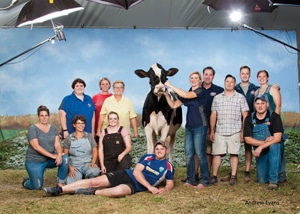
Fisher: I don’t think we necessarily focus on one “target” audience. We picture for whoever wants to photo, regardless of whether they are a large commercial dairy or a small family farm.
What can a dairy producer do in preparation of your arrival to make the process smoother and for the best possible picture outcome?
DeBruin: Exposure to the halter is of utmost importance. Be sure their feet are sound. If they can’t stand on a foot correctly, it’s impossible to flatter them.
Robinson: For the best possible results, first and foremost, after knowing the cow is in the right condition to photograph, is having her broke to lead if she is not. Tying her head high but at a comfortable height and then getting her comfortable with people around her.
It’s also important to have her washed and clipped. On picture day, having three to four people to help is ideal. Preferably these people will have some experience with picturing, but if not they’re people who are willing to do whatever needs to be done.
Too many times I show up and cows are not broke to lead or clean which puts the cows at higher stress levels and risking injury. I don’t really like when the cows are dirty and someone says, “Just Photoshop it,” rather than just taking the time of washing cows in the first place and then keeping them clean.
Jones: Scrutinize your animals to discover those who can return more income. Around the three to six-month time frame in lactation is usually a good time to photo. To have the animals better prepared, animals should be clipped, washed and udders bagged for photo time.
It also is not a bad idea to have the animals halter broken and a few extra hands to help on the scheduled picture day.
Fisher: We always want the animals to be fully clipped (body, legs, head and udder) and thoroughly washed, which I understand can be a bit challenging depending on the time of year and the environment the animals live it. This allows perspective buyers to fully see the bone structure and conformation of an individual.
If we are going to picture a cow, she needs to be properly ‘bagged’ meaning that she is full of milk. Typically, this is around 12-15 hours of milk in her udder, obviously depending on her stage of lactation and how much she is milking.
Aside from that, the animal should be halter broke or at least have been tied with her head up (meaning tied with her head at least shoulder height) until she accepts that and no longer is fighting. This is both for her safety, as well as the safety of the crew that has to work with her the day of photos.
It is also important to have enough ‘help’ to assist with the setting up of the animal when we photo. Generally, we ask the farm to have four to six people available to assist with the picturing process. One individual has to hold the animal at the halter, two people to move each of the front legs into place, one person to make noise and get the animal’s attention and another to hold the tail and/or move rear legs.
What has been your favorite photo you’ve taken or memory that you’ve had throughout your time picturing cattle?
DeBruin: I’ve been at this so long, I don’t like to single out a particular cow. We did multiple views of a Guernsey, Stockwell Farms Reward Hailey, the year she was Grand at Expo that were quite lovely. Random Luck KB Phoebe was one of my favorite Swiss pictures. Nothing was prettier than the ‘pond’ pictures at Expo on a pretty day. I
do have a fond memory of picturing a nice cow for a junior that I didn’t know at Expo. His parents made a point of contacting me later all excited because they didn’t know the cow could look so good and ordered large framed reprints for the youngster for Christmas. Those warm fuzzy feelings are always a good ending to a sometimes difficult day.
Robinson: I don’t really have a favorite picture that I have taken, but I do remember taking a picture of Willow Creek Title Yola at a small country fair in Ontario. After I pictured her the hair stood up on the back of my head, as I knew it was pretty special.
What gets me the most excited now is going to dairies and breaking some of those cows that are just a number to a lot of dairymen. It is memorable to take the time to work with them and let them show their personalities. The ones that figure it out make it very memorable.
My position as a photographer is a little different as, at times, I do the full service of breaking and preparing cattle for pictures. A large percentage of the cows I get to the boards and pass them on to someone whether I broke them or not. A lot of times there’s only one good chance so can’t risk them getting away or stirred up.
Jones: In some ways, I hope I haven’t taken my favorite shot. Others who come to mind are Idee Luster at the Royal, Hanoverhill Inspiration and Franken Monarch Rosel under the lights.
The most memorable was Glenamore Gold Prize who was Royal champion five times. She was extremely smart and would not stay on the boards. If we got a photo, it would usually take over an hour. Over the years, there have been multiple memorable times and farm people are the best.
Fisher: Gosh, this is the most difficult question so far! There are so many that stand out, but it won’t necessarily mean anything to those who weren’t there for it. Picturing the great “Veronica” was always both a pleasure and a challenge. In so many ways, she exemplified the Jersey breed – beautiful and balanced, yet curious and strong-willed.
I think one of my favorite moments was after her show career was over and I was at Arethusa on a beautiful summer day. She was lying down under one of the many trees in her outdoor pasture. I snuck over the fence to have a look at her. My initial thoughts were to go up to her and scratch her head (surely she must know me by now… right?). Instead, I just took a picture of her peacefully laying there. It is one of my all-time favorite photos.
More Information
In addition to input from these four professional photographers, Steve Rowley, Foxworth, Miss., also provided his opinion behind the value in professional picturing his Jersey cattle. Read his opinions and insight HERE!
If you would like to forward professional photographs to the Jersey Journal, please contact our staff for the proper protocol, sizing and quality.
